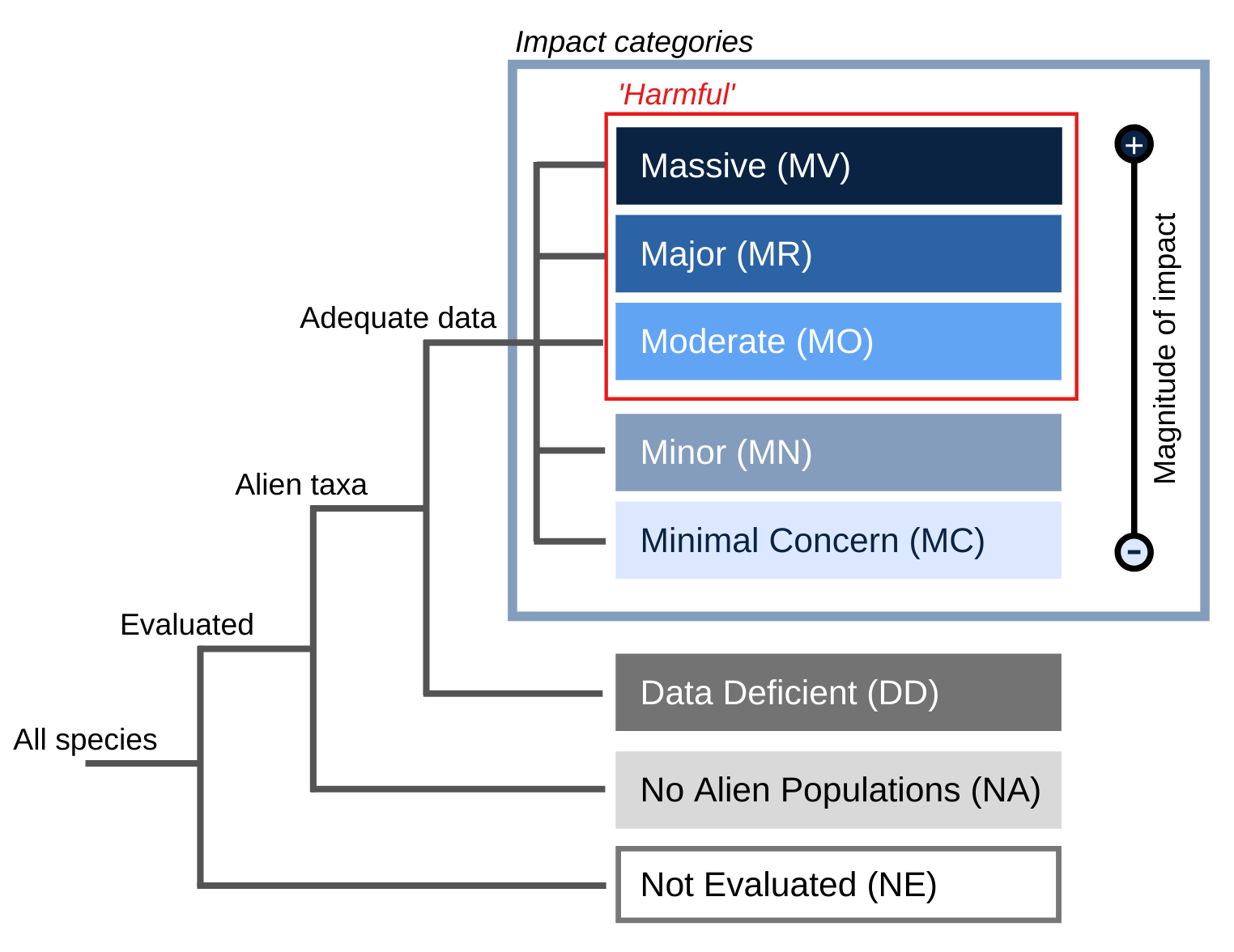- General
- Distribution
- Impact
- Management
- Bibliography
- Contact


Myrtus guajava , (L.) Kuntze
Myrtus guajava , var. pyrifera (L.) Kuntze
Psidium guajava , var. cujavillum (Burman) Krug and Urb.
Psidium guajava , var. guajava
Psidium guava , Griseb.
Psidium guayava , Raddi
Psidium igatemyensis , Barb. Rodr.
Psidium pomiferum , L.
Psidium pumilum , Vahl
Psidium pumilum , var. guadalupense
Psidium pyriferum , L.
Psidium cujavillus , Burm. f.
Psidium aromaticum
Cultivated in gardens but often escaped and naturalized where introduced. The guava is said to produce more fruit in areas that have a distinct winter season, compared to tropical areas.
Naturalized in Florida by 1765, it is now spreading into hammocks and pinelands, and has become dominant in the understory of some cypress stands.
P. guajavais subject to a multitude of pests and diseases. In India there are over 80 insect species that will attack guava trees. The Mediterranean, Oriental, Mexican and Caribbean fruit flies cause major problems, in that they infest ripe fruit with their larvae, making them inedible. Various fungi and nematodes are also responsible for damage to trees and fruit. See Morton 1986 (http://www.hort.purdue.edu/newcrop/morton/guava.html) for detailed information.
The most common way of preparing the fruit is through cooking, which eliminates the strong odour. The fruit can be stewed, canned, jellied, or made into guava paste and guava cheese. Guava juice and guava nectar are popular beverages, while guava syrup can be used to flavour desserts. Dehydrated, powdered guavas can be used for the same purpose, and breakfast flakes can be made by mixing guavas with cornmeal and other ingredients. Green guavas can also be used as a source of pectin, while small and overripe fruit are utilised as a source of ascorbic acid for various foods and drinks.
The wood of the guava tree is yellow to red, and is suitable for carpentry and turnery. It can also be used as a fuelwood, and to make charcoal. The wood also serves for use as fenceposts and tool handles on farm implements (MPTS Database)
The leaves and bark have a high tannin content. The bark is used for tanning hides, while the leaves produce a black dye.
When parasitised by the mistletoe (Psittacanthus calyculatus), the guava tree produces rosette-like malformations known as 'wood flowers'. These are sold as ornamental curiosities.
The medicinal uses of the guava are many and varied. Tea made from the leaves and/or bark is known to help cure diarrhea and dysentery, as well as treat stomach upsets, vertigo and regulate menstrual periods. Trees serve as shade/shelter for livestock and are used for erosion control (MPTS Database). A more comprehensive list of uses for guava can be found in the Rainforest Plant Database and in the Traditional Medicinal Plants of Samoa on-line database (http://www.dittmar.dusnet.de/english/suche-e.php?term=Psidium).
Principal source: Pacific Islands Ecosystems at Risk, (PIER, 2002)
Compiler: Scott Henderson, Charles Darwin Research Station, Galapagos Islands & IUCN/SSC Invasive Species Specialist Group (ISSG)
Review: Scott Henderson (Charles Darwin Research Station, Galapagos Islands).
Publication date: 2010-08-16
Recommended citation: Global Invasive Species Database (2025) Species profile: Psidium guajava. Downloaded from http://www.iucngisd.org/gisd/species.php?sc=211 on 16-10-2025.
Physical: Extensive stands of young trees can be controlled through burning, as cutting results in regrowth with multiple stems (Morton 1987). On the other hand, in the Galapagos, burning, manual cutting and even bulldozing have resulted in exacerbated invasion. Regeneration from underground parts by suckering limits the effectiveness of manual control (Cronk and Fuller 2001).
Chemical: Guava is sensitive to foliar applications of triclopyr, dicamba and 2,4-D at 1 lb/acre, and to cut surface applications of concentrates of these herbicides; very sensitive to basal bark treatments of triclopyr ester and 2,4-D ester at 2% and 4% respectively, in diesel or crop oil; very sensitive to soil-applied tebuthiuron at 2 lb/acre. Very sensitive to very-low volume basal bark applications of 20% triclopyr ester product in oil. A small-leafed shrubby form of guava appears to be tolerant of foliar applied herbicides but sensitive to tebuthiuron (PIER).
Biological: Goats and sheep can be used for control, as they graze leaves and strip the bark. Goats have been successfully used in Hawai‘i.














